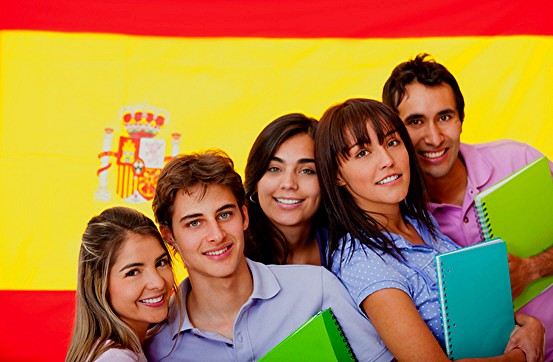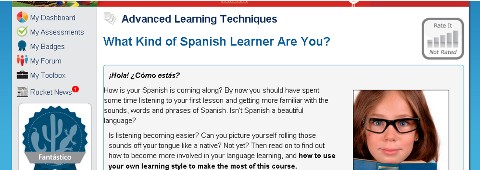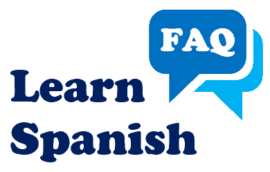
Do You Know Your Learner Type? This Could Be Holding You Back
If you are like most people (and I include myself here) then you will probably find that the task of learning a new language, such as Spanish in this case, can at times be a very challenging undertaking. This challenge will be made an awful lot more difficult for you, if from the start, you choose the wrong method of learning Spanish for the type of learner that you are. I discovered, that by finding out which kind of learner I was, I could choose the specific methods of learning that gave me the best chance of remembering my Spanish lessons. In doing so I also made the learning process quicker and easier.
Getting to know which kind of learner you are is something that many people fail to give any thought to before they begin to learn Spanish (or any language for that matter). This can lead to easily avoidable frustration and unnecessary difficulty. Do yourself a favour, and if you have not done so already, give some serious thought to the type of learner you are and in doing so you will surely discover which method of learning Spanish, or combination of methods, of the many that are available, will enable you to learn the Spanish language in the quickest and easiest way.
Three Different Kinds of Learner – Which Are You?
Since we are all very different individuals with varying character traits and different personalities it stands to reason that we won’t all learn new things in the same way or at the same pace. When we learn something new the three senses that we use most often are our sight our hearing and our ‘feeling’. The exception to this of course would be foods that are new to us – then our sense of taste and smell would come into play.
So, for the majority of new experiences that we have it’s a combination of what we see, what we hear and what we ‘feel’ at that time that helps us to remember that experience. Although our memory of any new experience is made up of a combination of our senses the fact is that some of us will remember more clearly what we saw, others will remember more clearly the sounds that they heard and for others still it will be how or what they felt about the experience that sticks most strongly in their minds.

This leads us to the fact that there are three different types of learner, each defined by the particular sense that they rely on the most to recall any experience that they have had. The three different kinds of learner are ‘visual’ (seeing) learners, ‘auditory’ (hearing) learners and ‘kinesthetic’ (feeling) learners. When it comes to learning a language like Spanish finding out which category of learner you fall into will help you to choose the method of learning that will give you the best chance of success in learning the language.
Visual (‘Seeing’) Learners
So, how do you know if you are a visual learner? People who learn better by visual means will often find that they are constantly doodling when they have a pen or pencil in hand. Their study notes will have pictures in the margins, things like arrows drawn on the page and boxes drawn around headings. Visual learners remember better when they write something down.
If you are a visual person you will probably need to see the map rather than be given directions. If you find that you need to look at someone when they are speaking to you, that you find it difficult to listen when there is noise in the background or that you always work better in quiet uninterrupted surroundings then there is a good chance that you are a visual learner.
Auditory (‘Hearing’) Learners
Auditory learners will often find that they think of their own notes or handwriting as untidy and will almost certainly find it difficult to read someone else’s handwriting. Newspapers or books with really small print will be a real pain in the neck and auditory learners will often find that they will use their index finger to keep their place in any text while they are reading.
People who are more strongly auditory always fare well when given directions – if they are told then they can easily follow. Auditory people are better at remembering verbal instructions rather than what they have read and usually learn well in a classroom situation, remembering well what the teacher or lecturer has said.
Kinesthetic (‘Feeling’) Learners
If you’re the kind of person who when having to assemble something – a piece of flat-pack furniture for example – just gets on with the job without bothering at all to read the instructions you could be a kinesthetic learner. Kinesthetic people are generally ‘hands-on’ and are happy to learn by trial and error and would much rather figure something out for themselves.
A kinesthetic learner will usually not want to be stuck behind a desk and will find themselves taking frequent breaks from study if they are. Kinesthetic people think much better when they have the freedom to move around and rarely ever get lost, usually having a very good sense of direction.
Know your Learner Type and Learn Spanish More Easily
Before I decided to go on the search for a learn Spanish course the thought of figuring out which type of learner I was never even entered my mind. In the same way that I guess most people would do, I just found a course that looked to be a good one, researched it thoroughly on-line to make sure that it was a decent course and then went and got it.
It was only when I started to go through the Rocket Spanish course material and came across an article in the ‘advanced learning techniques’ section of the course that I realised that finding out which type of learner I was could seriously help me with my Spanish learning.

In the ‘advanced learning section’ of the Rocket Spanish course there’s a quick and simple guide for helping you to figure out which type of learner you are and also suggested learning techniques for each of the three learner types. I found out that I was a visual learner and in doing so learned that concentrating on reading the Spanish words whilst listening to the Spanish conversations really helped them to stick in my mind. I also learned that writing out the Spanish conversations and words I had just learned helped me a lot to remember them more easily.
How to Find Your Spanish Learner Type
As you can probably see for yourself, doing what most people don’t bother to do – find out which type of learner they are – can really help you with your Spanish learning – it did for me. There are many resources on-line for finding out which learner type you are. The one I used is part of the Rocket Spanish course.
The part of the Rocket Spanish course I’m talking about is actually accessible through the free trial so you can use the same one if you’d like – Iv’e provided the link below. You will need to sign up for a free trial by entering your name and email address, then click the ‘my toolbox’ link in the left hand sidebar and in the ‘advanced learning techniques’ section look for the article entitled “What Kind of Spanish Learner Are You?“.
Although each of us can usually be classed as one of the three learner types I’ve talked about above the fact is that we all learn using a combination of our senses and using a variety of methods. In taking the time to find out which learner type we are we will establish our learning strengths and weaknesses and in doing so greatly improve our chances of learning the Spanish Language successfully.
